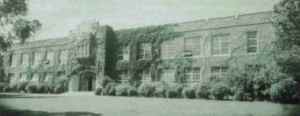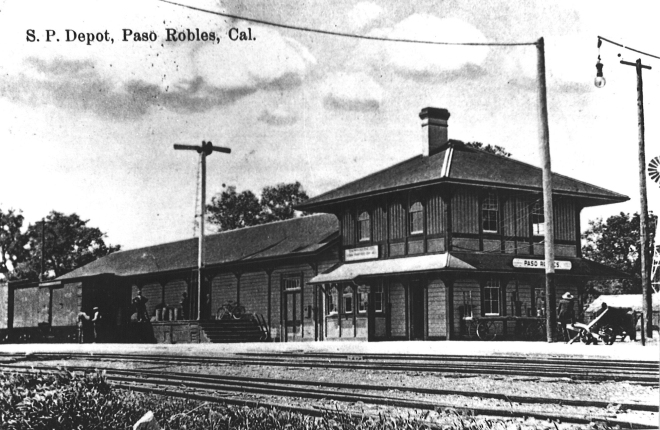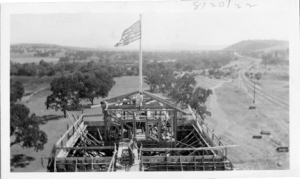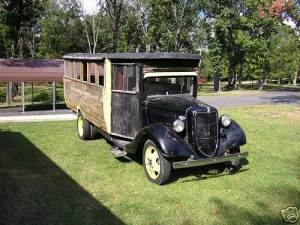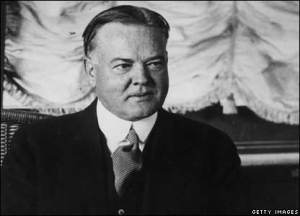This is part of a continuing series of stories of Paso’s past from local storytellers. The names have not been changed to protect the innocent.
by Don Campbell
Sylvester Dusi and the vineyard at Highway 46 intersection.
All the land in this area was once covered with a thick stand of blue oak and small scrub oak trees with some white oak trees, too thick to farm the soil. In 1919, Bob and Joe
Busi, with hired help, began clearing the white and blue oak trees off this field opposite where OSH and Target now sit where one sees the grape vines now owned and tended
by Benito Dusi.
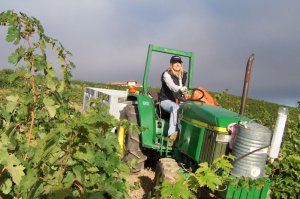
Janell Dusi farming the vineyard in 2013 that Sylvester Dusi planted
Brothers Bob, Joe, Jim Busi where charcoal makers in northern Italy that came to Shadow Canyon in the York Mountain area in 1913. They immediately began clearing land and making charcoal in the Italian method of covering a dome of wood with dirt and cooking the wood. Brothers-in-law Peter and Frank Pesenti, stonemasons in northern Italy, with their wives came to the Oakdale area in 1914 where they also began making charcoal to clear the land of the oak trees.
All the landowners had land to be cleared for farming; very few asking and getting stumpage fees of$1 to $2 a chord. Four foot long wood delivered at the Templeton railroad depot for shipment to wood yards and charcoal makers in the San Francisco and Los Angeles areas paid $6-8 a cord. Charcoal was worth $18 -$22 a ton. A cord of wood weighs 3 to 5 tons, usually
about 4 tons. Two cords of wood makes about 1 ton of charcoal. Three men working together with a hand saw, ax and black powder, could cut, split and haul 3 cords of wood a day.
Up through 1935, a man was paid $1.50 to $2.50 a cord. Only the straight wood that was easy to split, if too heavy, was kept; anything hard to split or with crotches, was burned up with the brush piled on the stump.
Bob and Joe Busi began clearing this field in 1919 and finished in 1920.
The 40 acre field was planted to zinfandel grapes in 1923 and Sylvester Dusi, recently from Italy, bought the vineyard in 1924. The zinfandel grape vines seen today in this vineyard are owned and tended by his son Benito Dusi. Behind his house on the slope of land to the railroad tracks is a charcoal oven that holds 30 cords of wood that Benito used in the 1950’s to make charcoal from wood he cut on Albert Anderson’s farm on Live Oak Road. The 30 foot long by 30 foot wide by 8 feet high oven was the largest Japanese style pit in the area when Paso Robles was producing 80% of the charcoal in California, 1948-1964.

Dusi Vineyard old vine Zinfandel today
Sylvester Dusi also bought the land a mile south that is beside the Templeton Cemetery. As it was cleared of its oak trees, that land was planted in grape vines. The last land cleared was beside the present freeway and Templeton Cemetery. Sylvester’s son Dante owns and operates this vineyard with his children. (Janell Dusi opened the first tasting room in the family’s long grape history in 2013, the winery is called J Dusi Wines.)
Son Guido, who for many years owned Paso Robles Electric, had just returned from fighting on the battlefronts of WW II. Sylvester hired Joe Busi to help him and his sons, including Dante and Benito, to make a pit of charcoal under one of the big oak trees beside the cemetery. One could only burn wood in the summer when it did not rain, so they did the pit under an oak tree for shade. The normal-sized dome of dirt -covered wood about 15 feet high and 25 to 30 feet in diameter would contain 30-40 cords of wood, yielding 15-22 tons charcoal.
Frank Pesenti, another famous name in Paso Robles viticulture, in 1918 near Oak Dale School was renowned for a pit 6 tires (25 feet) high that contained about 120 cords of wood yielding about 60 tons of charcoal.
Editor’s Note: If you want to taste some current Paso Robles Zinfandels, join us March 14-16, 2014 for Vintage Paso: Zinfandels and Other Wild Wines (formerly known as the Zinfandel Festival). For more information, go to www.pasowine.com
About the Author:
Don Campbell has been Vice Chairman and Founding Director of Heritage Oaks Bank, a Pioneer Day Committee member since 1964, a Paso Robles Rotary Club member since 1979 and Past President, Director of the Paso Robles Vintners and Growers Association, is a Charter Member in the California Mid-State Fair Heritage Foundation, a SLO County Farm Bureau member, a Paso Robles Trail Ride member for 30 years, and a California Mid-State Fair Junior Livestock Auction volunteer for 47 years. In 2012 he and his wife Gail were named Roblans of the Year.
 From the north the railroad and highway overpass consumed the Schauf farm. This dairy and alfalfa farm was once owned by Arnold Carminiti. He had come to our area about 1900 and at first had a job of cutting oak trees and blasting stumps out of the ground with dynamite. His son Waldo said that his father then bought the small dairy that lay along the Salinas River bank. The dairy barn lay right against the river bank with its springs issuing out sulfur water. He had a still behind the barn that was never found by the officials with the strong sulfur smell. The boys herded the cattle along the river bank as they didn’t have enough grass along with some alfalfa, too.
From the north the railroad and highway overpass consumed the Schauf farm. This dairy and alfalfa farm was once owned by Arnold Carminiti. He had come to our area about 1900 and at first had a job of cutting oak trees and blasting stumps out of the ground with dynamite. His son Waldo said that his father then bought the small dairy that lay along the Salinas River bank. The dairy barn lay right against the river bank with its springs issuing out sulfur water. He had a still behind the barn that was never found by the officials with the strong sulfur smell. The boys herded the cattle along the river bank as they didn’t have enough grass along with some alfalfa, too.
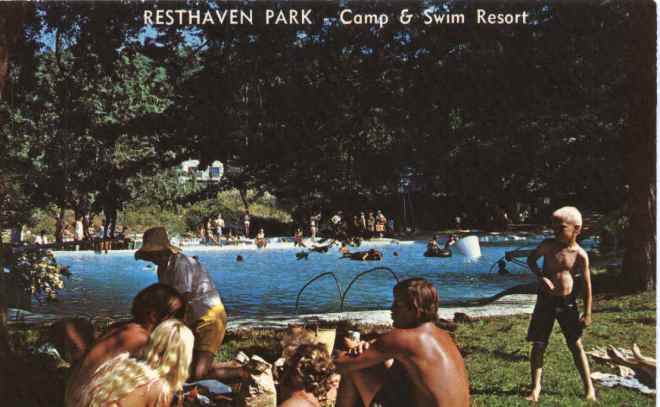

 In honor of the City of Paso Robles’ 125th birthday, the Paso Robles City Library will host a birthday celebration for children ages 3-8 on Saturday, September 13 at 2:00 p.m. in the library conference room. Guest of honor, local author Elizabeth Spurr, will read to children from some of her best-selling picture books including a perennial favorite, The Biggest Birthday Cake in the World. Following the special birthday story time, children are invited to decorate their own birthday cupcakes using goodies that will be provided.
In honor of the City of Paso Robles’ 125th birthday, the Paso Robles City Library will host a birthday celebration for children ages 3-8 on Saturday, September 13 at 2:00 p.m. in the library conference room. Guest of honor, local author Elizabeth Spurr, will read to children from some of her best-selling picture books including a perennial favorite, The Biggest Birthday Cake in the World. Following the special birthday story time, children are invited to decorate their own birthday cupcakes using goodies that will be provided. “Children love to celebrate birthdays, and the library wanted to be sure that the youngest Paso Roblans had a wonderful way to celebrate their city in style during this 125th anniversary year,” said Heather Stephenson, Children’s Services Librarian at the Paso Robles Library. “We are planning a fun-filled afternoon at the library, and while we may not have the biggest birthday cake in the world, there will be plenty of sprinkles and icing on hand.”
“Children love to celebrate birthdays, and the library wanted to be sure that the youngest Paso Roblans had a wonderful way to celebrate their city in style during this 125th anniversary year,” said Heather Stephenson, Children’s Services Librarian at the Paso Robles Library. “We are planning a fun-filled afternoon at the library, and while we may not have the biggest birthday cake in the world, there will be plenty of sprinkles and icing on hand.” Ms. Spurr’s many picture books including one of her newest titles, Monsters Mind Your Manners, will be available for autograph and purchase during the program. To learn more about Elizabeth Spurr visit
Ms. Spurr’s many picture books including one of her newest titles, Monsters Mind Your Manners, will be available for autograph and purchase during the program. To learn more about Elizabeth Spurr visit 